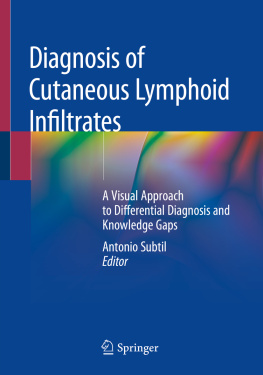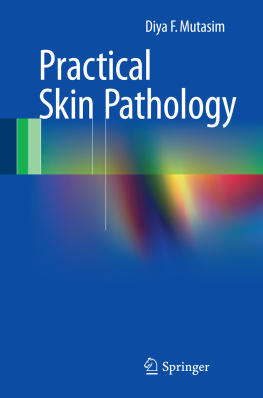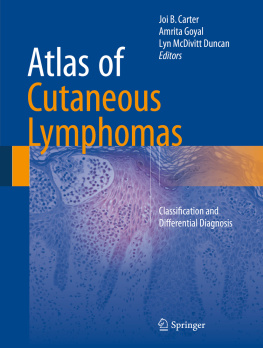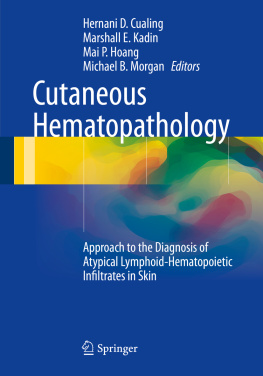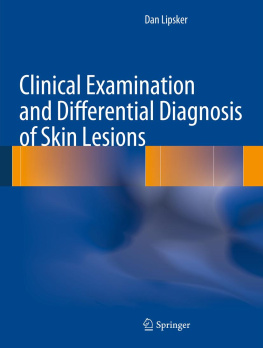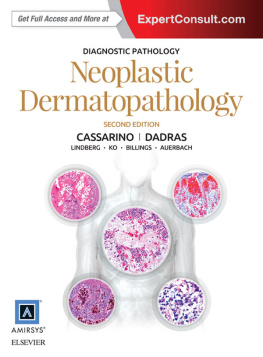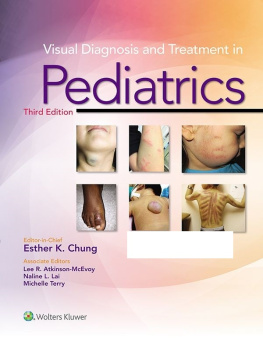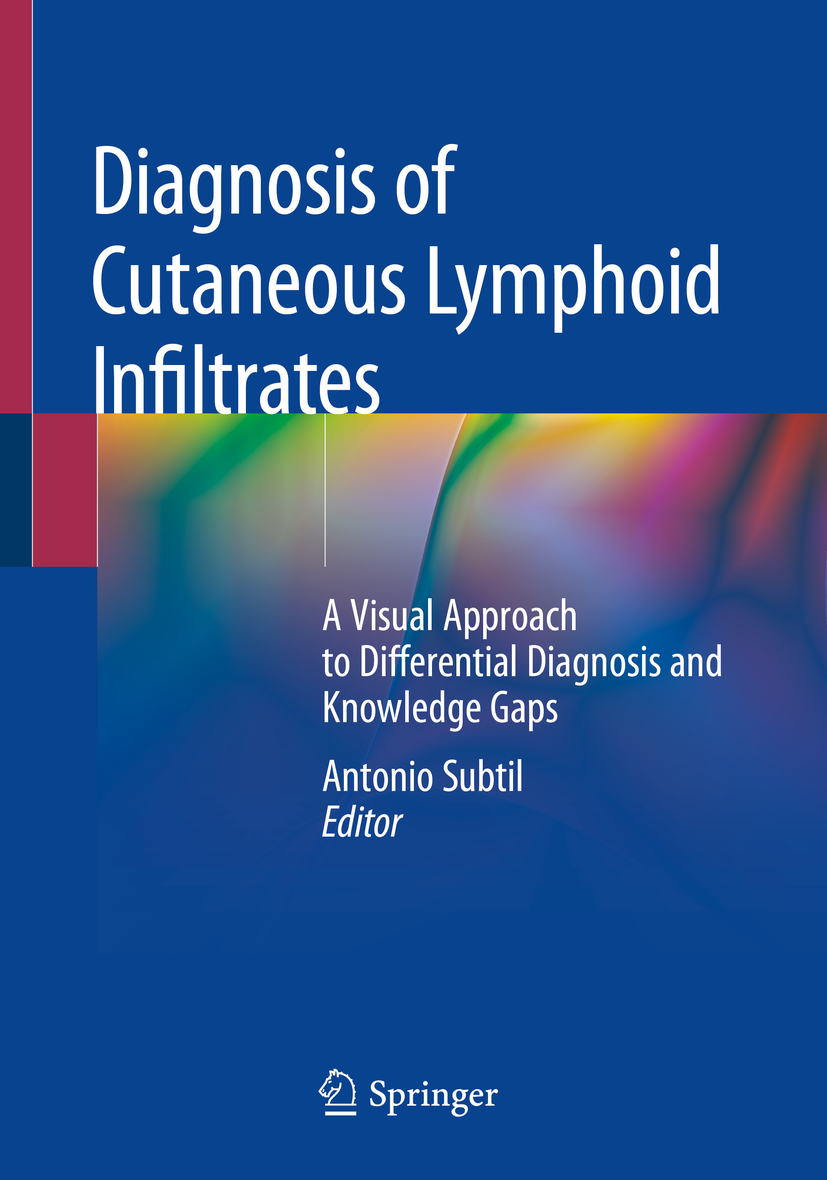Antonio Subtil
Dermatology and Pathology, Yale University, New Haven, CT, USA
ISBN 978-3-030-11652-1 e-ISBN 978-3-030-11654-5
https://doi.org/10.1007/978-3-030-11654-5
Springer Nature Switzerland AG 2019
This work is subject to copyright. All rights are reserved by the Publisher, whether the whole or part of the material is concerned, specifically the rights of translation, reprinting, reuse of illustrations, recitation, broadcasting, reproduction on microfilms or in any other physical way, and transmission or information storage and retrieval, electronic adaptation, computer software, or by similar or dissimilar methodology now known or hereafter developed.
The use of general descriptive names, registered names, trademarks, service marks, etc. in this publication does not imply, even in the absence of a specific statement, that such names are exempt from the relevant protective laws and regulations and therefore free for general use.
The publisher, the authors, and the editors are safe to assume that the advice and information in this book are believed to be true and accurate at the date of publication. Neither the publisher nor the authors or the editors give a warranty, express or implied, with respect to the material contained herein or for any errors or omissions that may have been made. The publisher remains neutral with regard to jurisdictional claims in published maps and institutional affiliations.
This Springer imprint is published by the registered company Springer Nature Switzerland AG
The registered company address is: Gewerbestrasse 11, 6330 Cham, Switzerland
Preface
The diagnosis of cutaneous lymphoid infiltrates is one of the most challenging topics of pathology, in part because this area is at the interface of several medical disciplines (dermatopathology, hematopathology, dermatology, and hematology/oncology). As a pathologist trained in both dermatopathology and hematopathology, I have noticed several knowledge gaps by dermatopathologists as well as hematopathologists. In addition, after more than a decade practicing in a referral center for skin lymphomas and participating in a busy consult service, I have witnessed recurring mistakes in the classification of cutaneous lymphoproliferative disorders and pseudolymphomas, some of which with significant clinical impact.
Both dermatology and pathology rely heavily on a visual approach to learning, developing differential diagnoses, and making final diagnoses. Pattern recognition and image decoding skills are essential elements in this process. However, most textbooks do not emphasize images nor adequately use illustrations to demystify important concepts. This disconnect is particularly critical in complicated topics, such as the correct classification of cutaneous lymphomas and pseudolymphomas. The goal of this book is to fill in important knowledge gaps utilizing a visual approach to learning. Both common and rare lymphomas are reviewed. Diagnostic pearls and pitfalls as well as differential diagnoses are covered in detail. In addition to multiple images, several tables, illustrations, and visual clues to the diagnosis are included. In order to highlight what is actually useful to make a diagnosis in real practice, genetic data that is currently only relevant at a research level is included separately in an appendix.
Beyond its usefulness to general pathologists, dermatopathologists, and hematopathologists, this book is also intended to be helpful for dermatologists, hematologists/oncologists, dermatopathology fellows, hematopathology fellows, pathology residents, and dermatology residents.
I would like to acknowledge and thank my mother, Cezina; my late father, Antonio; and my sisters, Adriane and Cristiane, for their lifelong support. Thank you to Larry Gibson, Ifty Ahmed, Jeannine Holden, Peter Heald, Jennifer McNiff, Rick Edelson, Mark Pittelkow, Jean Bolognia, Earl Glusac, Christine Ko, Anjela Galan, Francine Foss, Mike Girardi, Peggy Myung, Shawn Cowper, Irwin Braverman, Kal Watsky, Alistair Robson, Joan Guitart, Christiane Querfeld, Jaqueline Junkins-Hopkins, Catherine Stefanato, Russell Fiorella, Kamani Lankachandra, Edward Gutmann, Carole McArthur, Roberto Miranda, Jamie Skrade, Peter Kragel, Karen Mann, David Jaye, Shiyong Li, Rich Antaya, Jae Choi, Jennifer Choi, Bob Tigelaar, Mary Tomayko, Kacie Carlson, Ann Putio, Jean Saley, Sasha Finn, Carey Storan, Sikina Rossi, Jinah Kim, Uma Sundram, Youn Kim, Eleanor Knopp, Phil Shapiro, Rossitza Lazova, Steven Billings, Alina Bridges, Margot Peters, Diane Pierson, Adriane Brito, Lola Pettinicchio, Ricardo Macarenco, Jane Grant-Kels, Sharon Weiss, Tony Neto, Stephen Joyner, John Napoli, Gauri Panse, Brian Poligone, Phil LeBoit, Marcus Bosenberg, MaryAnn Ackerman, Debbie Williams, Terri Borrowman, Andrea Harris, Cristina Ishihama, Anini Group (Kelia, Adriane, Thays, Ricardo, Claudiney, Lusmaia, Greice, Maria Cristina, Patrycia, Claudio, Renato), Thanila Macedo, Marilia Ribeiro, Lara Quirino, Lucelia Badan, Celia Revilandia, Scott Freese, Jon Talbert, Marie Valdez, Nancy Talbert, Jack Gryder, Alice Gryder, Leigh Ann Homb, and Norman Homb. Thank you also to Lorraine Coffey, Rebekah Amos, and Samantha Lonuzzi at Springer for their support and outstanding skills. Lastly, thank you to my husband, Nathan, for turning the television volume down so I could write.
Antonio Subtil
New Haven, CT, USA

